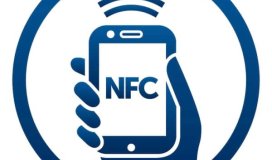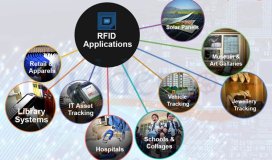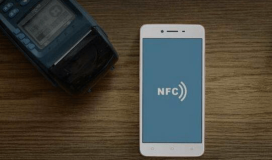Mobile and made of metal and glass, vehicles require a little more planning for RFID tag and equipment setup than some other applications. Before getting into the how-to of the setup, let’s first address the three main reasons vehicles are tracked using RFID.
Why Use RFID with Vehicles?
Three of the most popular reasons to use RFID with vehicles are access control, vehicle identification, and vehicle tracking.
Access Control – The ability to allow or deny access based on a vehicle having a specific RFID tag is a valuable way to provide a building or parking lot an enhanced level of security. These systems keep out unauthorized vehicles that would otherwise take up space and deters individuals from entering a secure building or lot. Thousands of RFID vehicle access control applications are operative in apartment/housing complexes, secure parking lots, construction yards, etc.
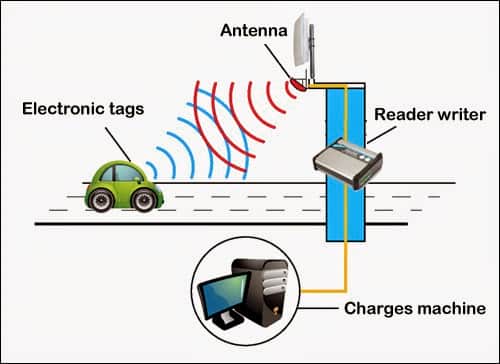
Vehicle Identification – The ability to identify a vehicle and access information about it by reading its RFID tag is a beneficial for companies like car rental agencies, car dealerships, and even car wash facilities. With the addition of software, these companies can pull up car records or purchases by just reading the car’s unique RFID tag. Rental companies and dealerships could have several cars on the lot that are nearly identical, so the unique RFID tag provides them with vehicle identification without trying to find and compare multiple VINs. Car washes (and other companies using car servicing as a business model) can use RFID to uniquely identify cars to enhance loyalty programs and automate transactions. Additionally, states and localities use RFID systems to automate tolling charges and keep traffic flowing more smoothly for those participating in the program.
Vehicle Tracking – Tracking a vehicle while it is traveling hundreds or thousands of miles is not a capability of UHF RFID; but, if checkpoints are set up along the route, the location of the vehicle can be estimated based on when it passes each one. This is being done throughout the nation at large truck weigh stations along major interstates. When 18-wheelers are weighed, their RFID tags are read to pinpoint location and can also be used to document the journey. For companies or persons interested in tracking vehicles in real-time and without setting up expensive infrastructure, vehicle GPS tags are a better solution.
How-To: Tag a Vehicle
Using an RFID tag manufactured specifically for vehicle tracking quickly narrows down the available options. The next step is to decide where the tag will be located on the vehicle. This will be dependent on where the equipment is setup and at what angle the tag receives the best read rates. Below are the three most common types of vehicle tags (grouped by where they are placed), and a little information about each.
RFID Windshield Tags – Windshield tags are distinguished by their ability to adhere to the vehicle’s windshield with a permanent (destroyed upon removal) or semi-permanent adhesive. This type of tag is tuned to work best on glass and is placed in the top right or left of the inside of the windshield. These tags usually have around 20 feet of read range in ideal conditions, and are best read with equipment overhead or to the side nearest to the tag with the antennas angled toward the vehicle.
RFID Hang Tags/Rearview Mirror Tags – Hang tags, also called Rearview Mirror tags are unique because they do not adhere or make contact with the vehicle; instead, they hang from the vehicle’s rear-view mirror. The key benefit to this tag is that it is not as permanent as the other two options and can be removed and stored when not in use. These tags can read up to 20 feet in ideal conditions from equipment overhead or to either side with the antennas angled towards the vehicle.
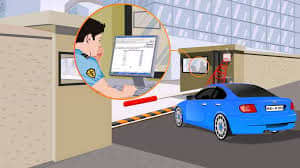
RFID License Plate Tags – License plate tags are more common in longer range applications because they can read up to 50 feet in ideal conditions. These tags are adhered or mounted on the license plate on the back of the vehicle and are read when the car is moving away from the RFID equipment instead of coming toward it. This directionality will affect the setup of the application because the antennas will need to be angled away from the vehicle to read the tag when it is moving past the equipment. The downside of using RFID license plate tags comes from the fact that the RFID tags lies on the outside of the vehicle; thus, they are more susceptible to damage and potentially being stolen.
How-To: Setup the Equipment
Of note, this section will be the most general section because of the varying application types, environments, tag types, etc. For most vehicle tracking applications, two equipment setups are recommended: a truss setup above the vehicle, or a side panel setup either on the right or left of the vehicle, depending on tag placement.
More info visit atlasrfidstore.com/track-vehicles-rfid
